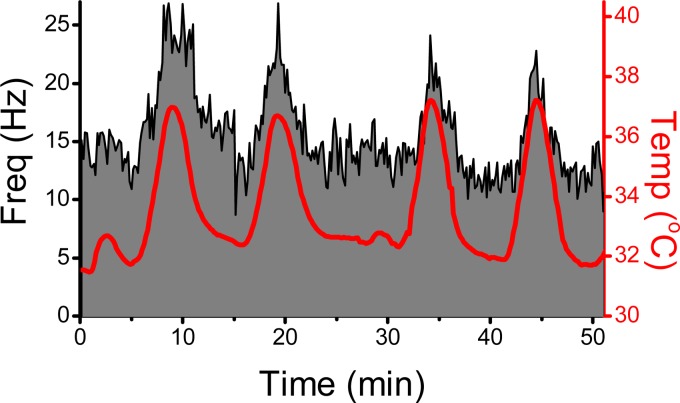Fig. 4.
For neurons with TRPV1+ solitary tract afferents, the rate of sEPSCs increases when bath temperature is raised. The histogram of sEPSC rate over time is depicted in grey and black outline. Recording from a second-order TRPV1+ neuron in a horizontal slice of rat NTS identified as outlined in Fig. 3. Red line and axis indicates bath temperature controlled by an in-line heater. Without electrical stimulation, the spontaneous EPSC rate was high and reproducibly tracked increases in bath temperature (red) between 31°C and 37°C. Such temperature responses persist in tetrodotoxin (TTX) or calcium channel blockers such as cadmium but are attenuated by TRPV1 antagonists such as SB-366791. Similar recordings in TRPV1− second-order neurons showed low sEPSC rates and little change with similar temperature shifts (not shown).

